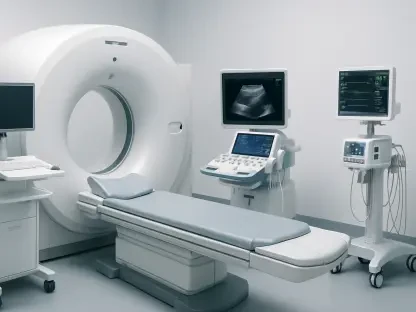In the rapidly evolving field of healthcare technology, few have been as instrumental as James Maitland. With a profound understanding of both robotics and IoT applications in medicine, Maitland has committed his career to leveraging technological advancements to solve some of healthcare’s most pressing challenges. Today, we delve into how these technologies are reshaping the landscape of health policy and administration.
Can you elaborate on the reasons behind reinstating 722 workers at the CDC and 220 employees at the NIH?
Reinstating these workers was primarily driven by the realization of critical gaps left by the layoffs. The roles these employees filled were vital for maintaining operational stability and ensuring the continuity of essential public health programs. When we lose such a significant portion of our workforce, the immediate impacts become apparent through decreased productivity and increased strain on the remaining staff.
How did you determine which employees would be reinstated after the layoffs?
The process of determining reinstatement involved a careful analysis of the roles that directly impacted our core operations. We prioritized reinstating individuals whose absence was most felt in terms of the services we need to deliver effectively. This often included those involved in frontline operations and essential support services, rather than administrative roles that could be more easily streamlined.
How did the initial layoffs affect the department’s operational capabilities?
The layoffs had a significant impact, creating noticeable disruptions in our ability to deliver timely and efficient healthcare services. For instance, there was a slowdown in research activities and public health initiatives due to the reduced workforce. These interruptions clearly illustrated the importance of each role and the interdependence within our teams to maintain cohesive operations.
Can you share specific examples of the “gaps” cited in your duties due to the layoffs?
One clear example was in the vaccination recommendations. With fewer staff, our ability to conduct and follow up on robust research was hindered, leaving us less able to provide timely updates on vaccine efficacy and safety. The role of each team member became more pronounced in their absence, highlighting how essential it is to have a full complement of skilled professionals.
How are the ongoing lawsuits affecting the department’s restructuring plans?
These lawsuits have introduced additional complexities into our restructuring process. They have necessitated a pause and a reevaluation of our strategies to ensure compliance with legal standards while still pursuing our goals of increased efficiency and reduced redundancy. Such legal challenges compel us to carefully assess each action for its potential long-term impact on the organization’s integrity and operational capacity.
Can you clarify the legality of the layoffs amid claims and lawsuits stating they were conducted illegally?
The legality of these actions is under scrutiny, with arguments focusing on whether due process was sufficiently observed during the layoffs. We are cooperating fully with the legal process, ensuring transparency and attempting to rectify any oversight that may have occurred. It’s a complex situation where administrative decisions intersect with legal interpretations, requiring meticulous examination.
What were the primary goals of the reorganization and layoffs within the HHS?
The primary goals were to streamline operations and cut down on redundancies, particularly within administrative functions where multiple roles overlapped. The intention was to enhance efficiency across departments, allocate resources more effectively, and focus more on direct patient care and essential health services rather than administrative bureaucracy.
How were decisions made regarding roles defined as “redundant administrative offices”?
We critically assessed each department’s output and contributions to strategic goals, allowing us to identify areas where streamlining could significantly enhance overall efficiency. This included consolidating offices with overlapping functions and eliminating roles that primarily duplicated efforts seen in other parts of the department.
How is the department planning to address the uncertainties faced by employees currently on administrative leave due to the court order?
We are maintaining open lines of communication with these employees and providing them with as much information as possible about their future roles. Our aim is to foster clarity amidst this uncertain period, offering reassurances and support as we await further legal directives which will influence subsequent decisions.
What are your plans if the court lifts the injunction on job cuts at federal agencies?
Should the injunction be lifted, we would initiate a thorough review of our current workforce needs versus our strategic objectives, ensuring that any further adjustments are made with precision and thoughtfulness. The goal is to align our workforce perfectly with the demands and challenges that arise in this dynamic healthcare environment.
How do the recent changes in staffing align with the budget discussions for 2026?
Staffing changes are tightly aligned with our goal to optimize funding allocations, ensuring that each dollar spent contributes directly to enhancing our healthcare services’ reach and quality. We are scrutinizing expenditure across all levels to ensure fiscal responsibility while achieving our strategic health objectives.
Have there been any budget reallocations to address gaps that emerged post-restructuring?
Yes, we have revisited our budget allocations to address newly surfaced gaps. This included prioritizing funds for programs and departments showing immediate and critical needs post-restructuring, thereby maintaining a balanced approach to resource management and service continuity.
What feedback have you received from employees about the restructuring process?
Feedback has been mixed, with some employees expressing concern over job security and the transparency of our processes. However, others have appreciated the department’s efforts to enhance communication about our strategic vision and the rationale behind certain decisions, which helps in understanding the bigger picture.
How is the department improving communication to avoid confusion during such reorganizations?
We’re implementing more frequent and transparent updates, increasing access to leadership through town halls and forums, and actively soliciting feedback to inform our strategies. By prioritizing clear communication, we aim to minimize confusion and build trust during these transitions.
What have been your biggest challenges since stepping into the role of HHS Secretary during this tumultuous period?
Balancing immediate operational needs with long-term strategic goals has been a significant challenge, particularly in the face of unexpected legal and logistical hurdles. Building consensus among various stakeholders and maintaining morale amidst uncertainty have required careful navigation and considerable patience.
How do you envision the future of HHS under your leadership, especially after these significant changes?
I see a future where HHS operates with heightened efficiency, where care delivery and public health initiatives are optimized through innovative use of technology and a well-aligned workforce. My goal is to foster a responsive, resilient department capable of weathering any future challenges with agility and responsibility.









